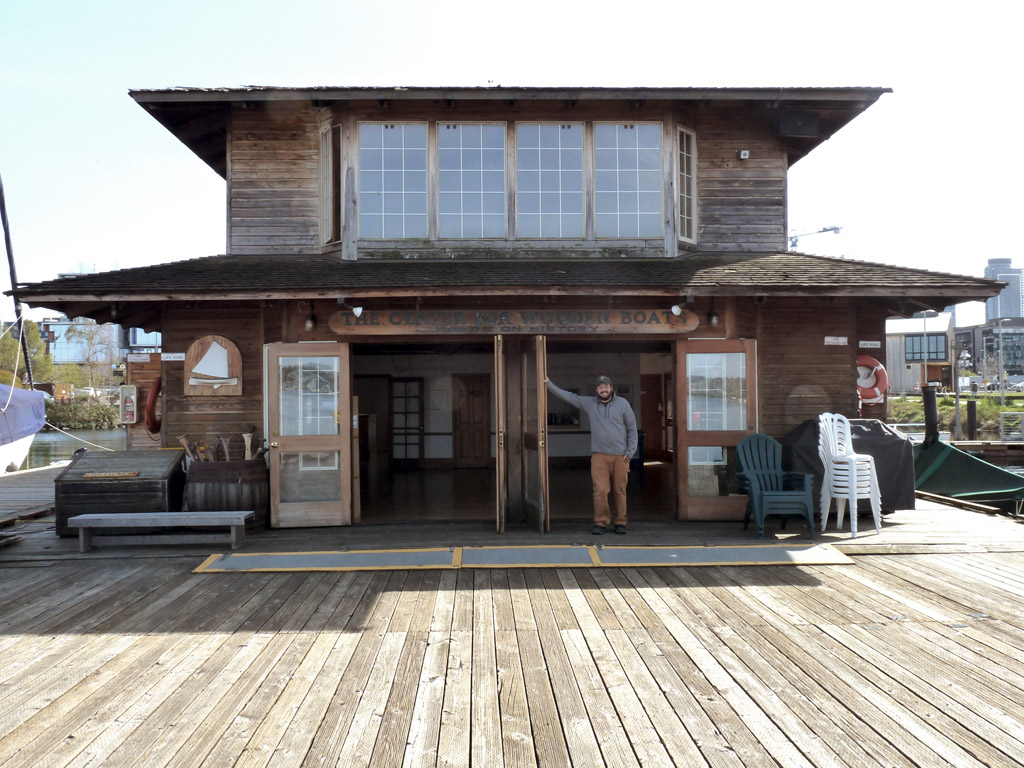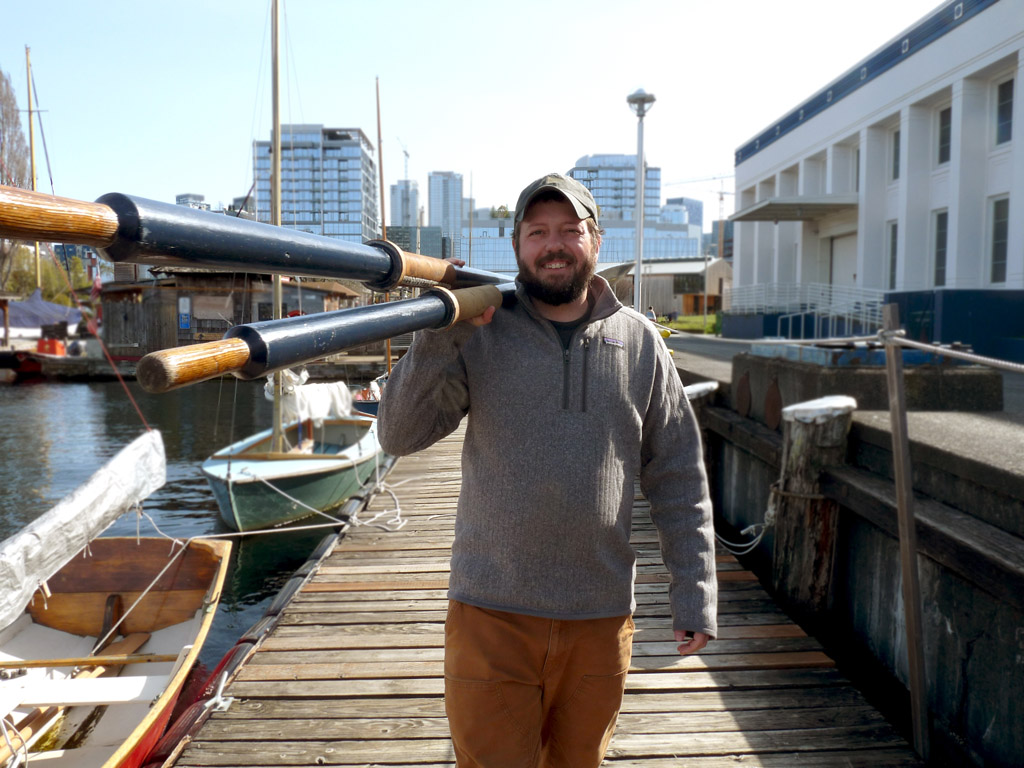
After first arriving in the Puget Sound in 2016 to care for The Center for Wooden Boat’s historic fleet as boatwright, Josh Anderson took the helm as its executive director in 2020—right as the shutdowns caused by the pandemic took hold. But, even with its distinctive Lake Union buildings and docks shuttered to the public, Anderson and the CWB team continued on full steam ahead, planning more maritime training and licensing courses, hosting expert talks online, and even campaigning to have their facilities designated as historical landmarks. Now, as plans start to come to fruition in 2021, Anderson sat down with us to chat all things wooden boats—the history, the craft, the appeal—and what’s next for one of Seattle’s most distinctive resource centers.
There are boating enthusiasts and then there are wooden boating enthusiasts. What do you think makes this particular type of boat so special to aficionados such as yourself?
“There’s something very appealing about the historic nature of wooden boats,” Anderson says. “In a way, [they] can live forever. The parts and pieces can be independently replaced and restored and you can have boats that keep on for a generation, or two, or three. You get to play a part in the boat’s history, and in turn, the boat becomes a part of your family. And for me, I’m a carpenter by trade so I also love the idea that since wood is a living, breathing organic material, wooden boatbuilding is its own form of functional art, too.”
As an East Coast native, what have you seen about boating in the Pacific Northwest that is distinctive or unique from the Other Coast?
“Well, first and foremost, you can boat year-round here,” he says with a laugh. “We moved here from Maine where the boating season is essentially 3-4 months long and the first fall hurricane meant pulling out the boat for the rest of the year. Here, boats can stay in all year; you can go cruising in November, or I remember rowing out on the lake one sunny January day and thinking, ‘Yeah, this is awesome’.”
Tell me about your personal boat-building projects; what are you working on now?
“Right now, it’s a 32’ Alden Malabar Jr Poco Moto. It’s a deep-hulled sloop from 1950; it was actually built by Tacoma Boatworks, it was one of 16 at the time. John Alden, the designer, is quite well-known on the East Coast, he also designed boats for the America’s Cup. I’ve been working on this one for two years now; I’ve rebuilt the engine, we’re redoing all the rigging, hoping to prep it for the next 20-30 years to come.” With a chuckle, he adds: “It’s eating up most of my extra time.”
“The other project I’m excited about is an Ed Monk skiff design that was lost and that I built from scratch using the old plans. (Monk was one of the premier naval architects in the Pacific Northwest region from the late 1920s through the ‘60s). I thought it would be a good design to use for a boat building class and we’re hoping to build them with youth moving forward, now that I have it figured out. The design is very conducive to learning, you can build them using the traditional big wide timber, but it’s also really lovely built with the more modern plywood, too.”
Tell me a little bit about the current effort to make the Old Boathouse and floating structures a historical landmark. What do these spots tell us about the story of Seattle?
“This organization started on a houseboat that was located under the Aurora Bridge and this initiative was kick-started by Colleen Wagner [one of the founders of CWB] before she passed away. Our waterways are state-owned and we are actually part of the Maritime Washington National Heritage Area, and our buildings are part of the rich history of this lake. We’re hoping that this designation would help protect our floating buildings and make them ever more accessible for people to continue to visit us for years to come.”
As we emerge from 2020 and look ahead to 2021, what are you most excited about for the Center this year?
“One thing I’m especially excited about is we are bringing back the boat building apprenticeship program. We’ll be able to host a restoration project here and allow volunteers to come in and help our apprentice. The boat itself is incredible: It’s a 1906-era vessel, and I believe it was the first motorized lifeboat ever in the San Francisco area back in the day. It will be so amazing to bring it back to life!”
“The pandemic also ironically gave us the time to reach out to other organizations to find ways to work together. We’ll be doing a ton of work with underserved youth to provide them with free programming alongside the folks from U.S. Sailing. For us, it’s super important that this is a very accessible place. You don’t have to have any money or any experience to come here and learn. We’re a place to introduce people to boating, to the city, and it’s so gratifying to see people get their start in boating here at CWB.”
For more information on the Center for Wooden Boats and its many programs, visit cwb.org.
